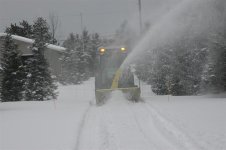Ok, I may be repeating what someone else said but.....
Redman:
Looked at your time/temperatures
At 10:51
Engine - 164
Radiator - 78
The outside air is at 39 correct??
Why is the radiator running higher than 39??
I think your thermostat is not closing correctly, or it does not reseat itself.
You should try pinching the inlet to the radiator and see what the engine temps do while its idleing (it should overheat!).
It doesnt take too much bypass to overcool if the fan runs constant.
Sorry if this is a repost.
T.
Redman:
Looked at your time/temperatures
At 10:51
Engine - 164
Radiator - 78
The outside air is at 39 correct??
Why is the radiator running higher than 39??
I think your thermostat is not closing correctly, or it does not reseat itself.
You should try pinching the inlet to the radiator and see what the engine temps do while its idleing (it should overheat!).
It doesnt take too much bypass to overcool if the fan runs constant.
Sorry if this is a repost.
T.
